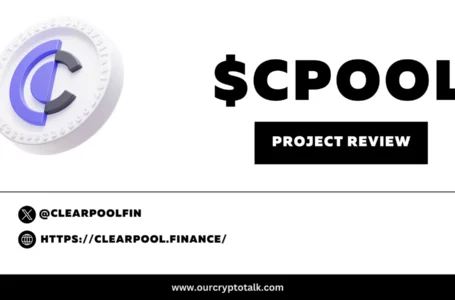
What is Polkadot (DOT)?
When Polkadot’s initial development and Proof of Concept (PoC) design first emerged over 4 years ago, the project was still relatively under the radar of crypto enthusiasts and institutional investors, but it has ever since proven to be one to keep an eye out for. In fact, from 2016 onwards, Polkadot has built an incredibly reputable ecosystem of top-notch developers, architects and project leaders, has designed a sophisticated future roadmap and has experienced exponential growth, allowing it to secure a spot within the Top 10 most valuable cryptocurrencies in 2021.
Polkadot is a cryptocurrency project which seeks to power the decentralized future of the internet (Web 3.0). It is interoperable with other blockchains inside and outside of cryptocurrency, it allows for the creation of smart contracts and new blockchains (and tokens), it makes it possible for blockchains to exchange information, it is upgradeable (no hard forks!), and the protocol is governed by those who hold DOT, Polkadot’s native cryptocurrency.
1. Polkadot’s Parachains Reduce Congestion
We mentioned speed and congestion earlier. Polkadot uses parachains to solve these problems. Rather than pushing all the applications through one network, each application has its own mini blockchain — or parachain — that connects back to the main chain.
In practice, that means if there’s a surge of demand for one particular application, it won’t affect the performance of applications on Polkadot’s blockchain. Think of it like side roads that take traffic away from a congested thoroughfare.
2. It Has Gained Over 630% Since Its Launch
DOT was launched in August 2020 and initially traded at $2.76 per coin. At the time of writing, CoinMarketCap put the value at $20.21 — about a 630% increase in less than a year.
It hit an all-time high of $49.69 on May 15 before losing more than half its value in the recent crypto price slump. If you’re considering buying Polkadot, think about whether you believe the coin has long-term potential. It might make huge gains in the coming year, but it could also dip even further. By investing for the long haul, you can hold through any short-term losses.
3. It Has a Fast-Growing Pool of Developers
The cryptocurrency market is so new that it can sometimes be difficult to compare projects and understand the fundamentals. Market caps can be misleading. Coins use different validation methods, solve different problems, and there’s very little historical data.
One factor to look at is the management team. Another is how many developers are putting time into the project. A recent report from Electric Capital showed that Polkadot almost doubled its development community from 197 people in 2019 to 388 in 2020. This is still a fraction of the number of developers working on Ethereum, but it is still an indication of Polkadot’s growth and popularity.
4. One of Polkadot’s Founders Also Co-founded Ethereum
Ethereum may have been the brainchild of Vitalik Buterin, but a number of people were involved in launching the project. One of these was Dr. Gavin Wood, who was Ethereum’s Chief Technology Officer before he moved on to co-found Polkadot.
The other two co-founders, Robert Habermeier and Peter Czaban, also have great crypto credentials and solid backgrounds in cryptography and distributed technology.
5. Polkadot Can Talk to Other Networks
Ethereum (ETH) is currently the biggest programmable blockchain in the cryptocurrency industry. According to State of the Dapps, over 80% of decentralized applications (Dapps) are built on its network. Unfortunately, the Ethereum network hasn’t kept up with its dramatic growth. Until it can upgrade to Ethereum 2.0 (Eth2), the system is slow, congested, and expensive. Plus, it doesn’t work well with other networks.
Polkadot is not only faster and more scalable, it’s also designed to work with other networks. This would allow developers to build applications that used both the Ethereum and the Bitcoin blockchain, for example.
6. Polkadot Still Faces Stiff Competition
The five points above show why Polkadot is an exciting project with a lot of potential. However, there are several competing cryptocurrencies in this space. And so far, few cryptocurrencies have been able to touch Ethereum. If it can upgrade to Ethereum 2.0 before too many developers move to other blockchains, we can expect it to continue to dominate.
In the long run, there’s almost certainly space for several players, but not all of them will succeed. It would only take one major security breach to reduce confidence and knock Polkadot — or any of the others — out of the running.
Other mover worth watching in the programmable blockchain market are:
- Cardano (ADA)
- EOS (EOS)
- NEO (NEO)
Cardano also has a strong team and well-thought-out concept, which is why both Polkadot and Cardano are regularly referred to as potential Ethereum killers.
Conclusion
If you’re considering buying Polkadot, you can get it from most major U.S. cryptocurrency exchanges. Be aware that all cryptocurrency investments carry risk. The prices can be extremely volatile, so it isn’t a good idea to invest money you can’t afford to lose. We don’t yet know how regulation in the U.S. will unfold, which could be a game-changer for the crypto industry as a whole.



















